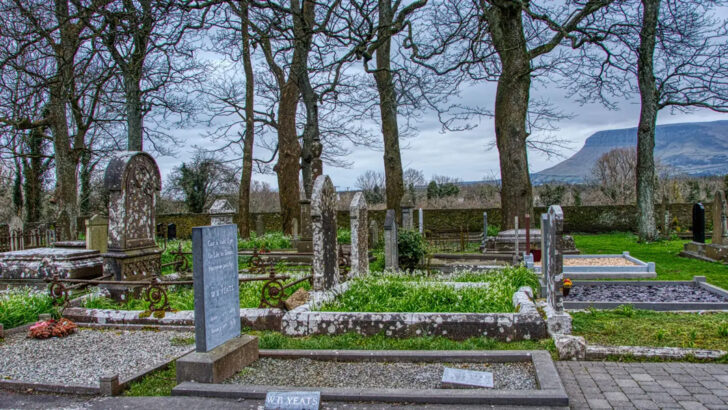The poet and Nobel Prize winner William Butler Yeats died on 28 January 1939 at Roquebrune-Cap Martin, on the French Riviera. In ill health for some years he had been staying there to enjoy the mild warm winter weather for several years.
He had said to his family that if he died he might be interred there for a year, as he felt so at home there. Then after a year his remains could be carried back to his native Sligo and buried there in Drumcliffe churchyard, which had familial associations for Yeats, a hope alluded to in one of his last poems.
Direction
But by January 1940, when this direction might have been carried out, the tide of war had washed over Europe, and Roquebrune, which lies between Menton and Nice, was now in an area of France administered by the Vichy Regime. For a time it was even under Italian occupation.
By the time the war came to an end in 1945 the lease on the Yeats’ grave had run out. The story grew up in the 1950s, put about by friends and admirers of Yeats, after his remains had been supposedly brought back to Ireland on an Irish naval vessel, for reburial , that his original grave had been dug up and the poet’s bones place in a common ossuary that lay behind the site.
But is it really true? This mystery was investigated by a staffer of the Department of Foreign Affairs. not indeed in 1949, but a quarter of a century later”
Dublin wits – the kind of people Yeats himself referenced in his poem about Easter 1916, who indulged in the “daily spite of this unmannerly town” – delighted in the thought that the whole elaborate ceremonial carried out by the Irish government and the Church of Ireland in September 1948, was in reality a hollow sham.
One still finds many today who still believe this. It is just the sort of fact that in an era of “fake-news”, is relished by anarchic spirits. But is it really true? This mystery was investigated by a staffer of the Department of Foreign Affairs. not indeed in 1949, but a quarter of a century later.
On a visit to Roquebrune they talked with a man over coffee in the town square who told them that he had been involved in the retrieval of the poet’s remains back in 1949. He said there could be no doubt that they were his, as the bones were quite distinctive. He mentioned the poet’s height, his large head, and the fact that the trunk was encased in the “steel girdle” that they poet wore in life to support his weak back.
The Dublin wits, and those who indulge them, were quite wrong.
As a coda to the return of the poets’ remains to Ireland in 1948, there also arose in the minds of many in the decades since a notion that perhaps James Joyce’s remains, which lie in the Fluntern Cemetery of the City of Zurich in Switzerland should be repatriated.
Refused
While she was alive his widow refused to move them – she imagined him lying there, listening to the lions’ roar in the nearby zoo, a reminder of Dublin zoo to Joyce. After her death the matter would have been stoutly resisted by his grandson Stephen Joyce, who came to control the Joyce estate, a man who had inherited his great-grandfather John Joyce’s skill with invective. Joyce remains in Zurich, in death as in life, an exile of Erin. The only change being that Nora Joyce now lies beside him.
(National Archives files 2024/52/6 and 2024/5/28)


 Peter Costello
Peter Costello Yeats grave at Drumcliffe
Yeats grave at Drumcliffe 